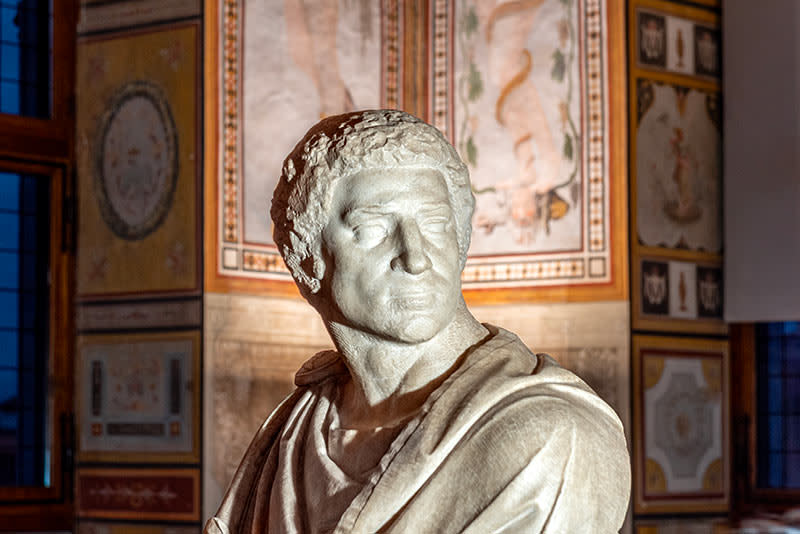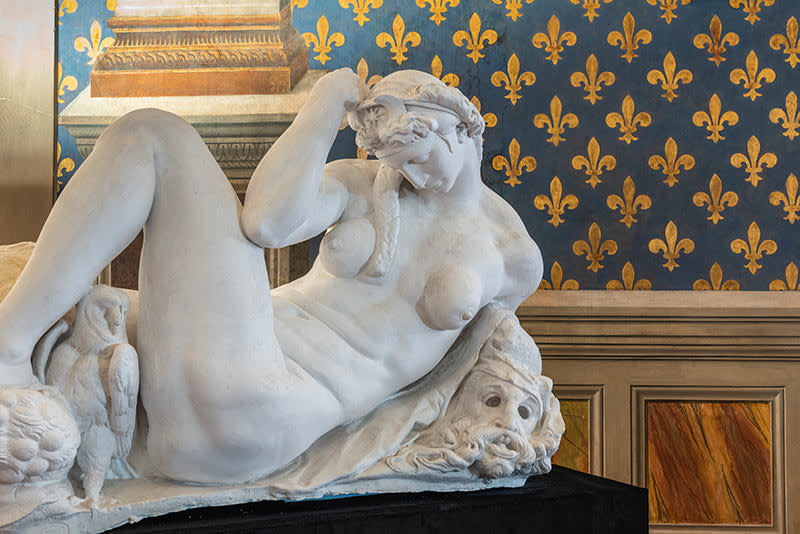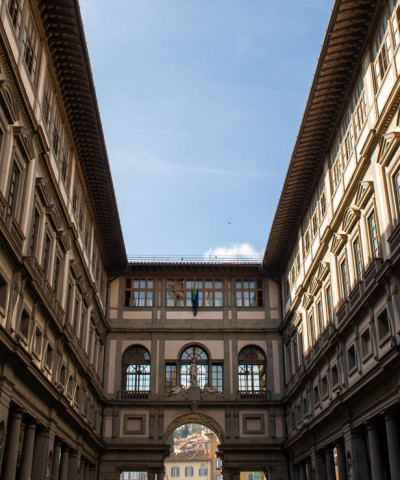The Michelangelo and Power exhibition at the Palazzo Vecchio Museum
From 18 October to 26 January 2025 an extraordinary exhibition of more than 50 works including sculptures, paintings, drawings, autograph letters and plaster casts
From 18 October to 26 January 2025, Palazzo Vecchio hosts the exhibition Michelangelo e il Potere (Michelangelo and Power), curated by Cristina Acidini and Sergio Risaliti, promoted by the City of Florence in collaboration with the Fondazione Casa Buonarroti and organised by the Fondazione MUS.E. The design and direction of the exhibition are by architect Guido Ciompi, in collaboration with architect Gianluca Conte of the Guido Ciompi & partners studio.
Michelangelo and Power develops on the second floor of Palazzo Vecchio, between the Sala delle Udienze and the Sala dei Gigli, with an itinerary of more than fifty works: sculptures, paintings, drawings, handwritten letters and plaster casts - the result of exceptional loans from prestigious institutions such as the Uffizi Galleries, the Bargello Museums, the Casa Buonarroti Foundation, the Fundación Colección Thyssen- Bornemisza and the National Galleries of Ancient Art in Rome, to name but a few - chosen to illustrate Michelangelo's relationship with power, his political vision and his determination to place himself on an equal footing with the powerful of the earth.
 Michelangelo e il potere, Palazzo Vecchio, Firenze (ph. Leonardo Morfini)
Michelangelo e il potere, Palazzo Vecchio, Firenze (ph. Leonardo Morfini)‘Even the most famous works of art and documents can express new meanings when they are placed in a context that enhances certain aspects of them that are usually difficult to perceive,’ commented Cristina Acidini, curator of the exhibition. ‘There has been no artist who has had such close and such continuous relations with the powerful of the earth in his life as Michelangelo,’ continued Sergio Risaliti, curator of the exhibition. ‘For the first time, a major exhibition dedicated to the genius of Buonarroti is being held in Palazzo Vecchio. And for the first time in history, what to all intents and purposes can be considered a political manifesto of rare power enters these rooms’.
The real star of the exhibition is the famous bust of Brutus, exceptionally loaned by the Museo Nazionale del Bargello and for the first time in history exhibited in Palazzo Vecchio. The placement of the sculpture of Brutus within the palace of the Florentine government is cloaked in a very strong political significance, making explicit the confrontation between Michelangelo's political thought and the Medici power.
The display in the Sala dei Gigli intends to recreate Michelangelo's dense network of encounters, confrontations and clashes with power, drawing a sort of constellation of portraits of illustrious men and women, all revolving around the Portrait of the Artist painted by his friend Giuliano Bugiardini, positioned in the centre of the large wall as a ‘blazing star’. This is followed by portraits of Girolamo Savonarola by Fra‘ Bartolomeo and Pier Soderini attributed to Ridolfo del Ghirlandaio, as well as those of Cosimo I in armour by Agnolo Bronzino, Vittoria Colonna, Cardinal Reginald Pole in conversation with Paul III and that of Leo X with Cardinals Giulio de’ Medici and Innocenzo Cibo, also by Bugiardini.
 Michelangelo e il potere, Palazzo Vecchio, Firenze (ph. Leonardo Morfini)
Michelangelo e il potere, Palazzo Vecchio, Firenze (ph. Leonardo Morfini)Representing Michelangelo's various relationships with the powerful people he met during his long life, other important works are on display. Many are those granted by the Casa Buonarroti Foundation, including a drawing depicting a Nude Torso from behind, a study for the Battle of Cascina (which refers to the commission by Pier Soderini, the gonfalonier who wanted the David at the foot of the government palace), no less than four Drawings of fortifications executed by the artist during the siege of Florence in the service of the Republic, and two Design Drawings for the San Lorenzo complex, one for the façade of the Basilica and the other for the Laurentian Library, which narrate his relationship with the Medici popes, Leo X and Clement VII. Added to this very important nucleus of drawings is the Plan of St. Peter's Basilica, preserved in the Uffizi Galleries, an undertaking that kept Michelangelo busy for many years from 1546 until his death in 1564, in a not always easy confrontation with as many as four popes from Paul III to Pius IV.
To give an account of the legendary stories of two lost early works, the Faun and the Sleeping Cupid, two previously unpublished marble sculptures attributable to 16th-century sculptors from private collections are exhibited.
Of great interest is the presentation of a sort of plaster casts gallery dedicated to Michelangelo, with casts of some of his major works, all linked for various reasons to the artist's relations with the greats of the time: such as the cast of the Candelabrum-holding Angel, made in Bologna where he was protected by the nobleman Francesco Aldrovandi, the cast of the Bacchus commissioned to the artist by Cardinal Riario, nephew of Sixtus IV, the plaster reproduction of the Vatican Pietà made in Rome for Cardinal Jean Bilhères De Lagraulas the monumental copy of the head of the David in Piazza Signoria, the two Slaves (the Bearded and the Dying), the Night of the Medici Chapels, one of the sculptures sculpted to celebrate the Medici dukes, Lorenzo and Giuliano. These indirect testimonies also include a plaster reproduction of Michelangelo's Bust, made from the original by Daniela da Volterra.










